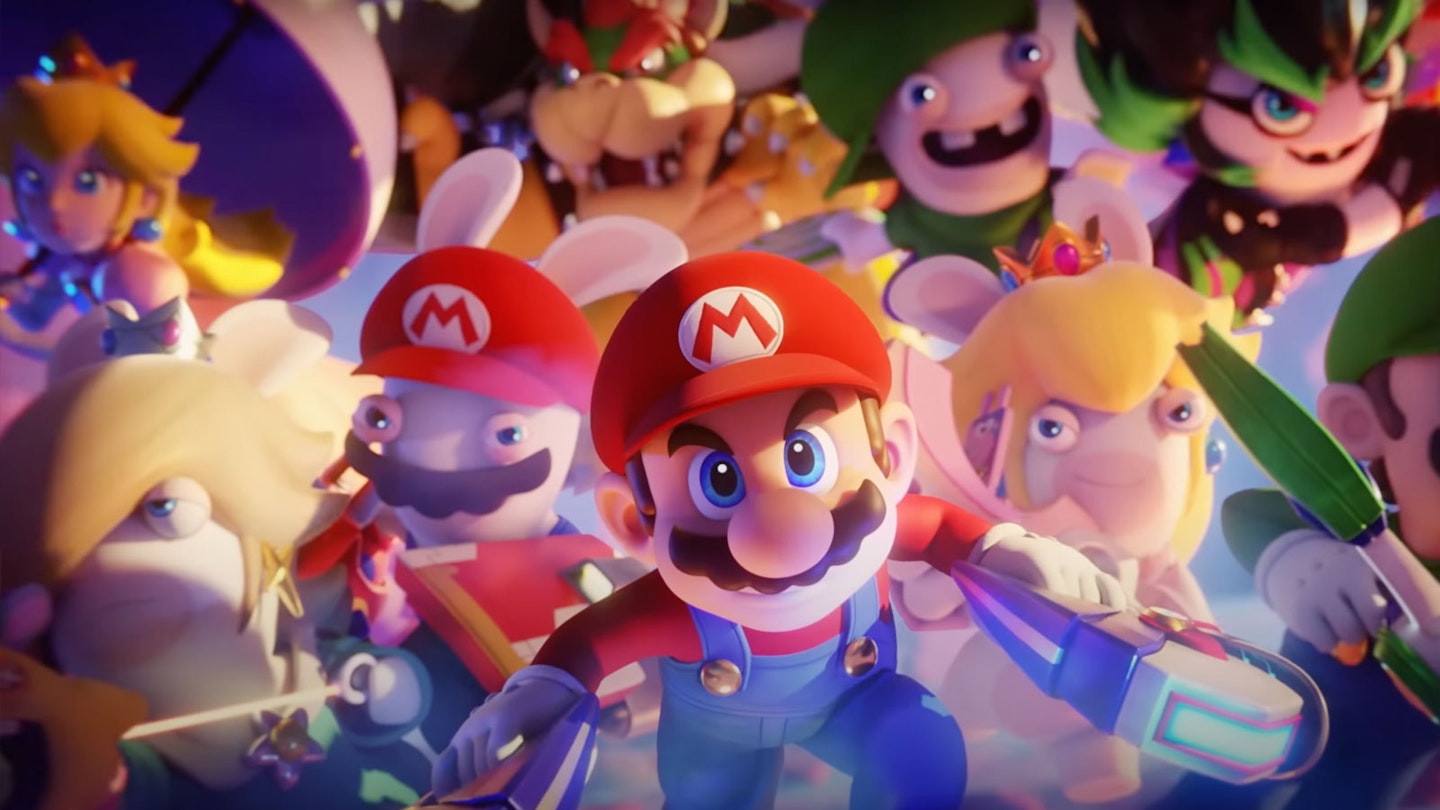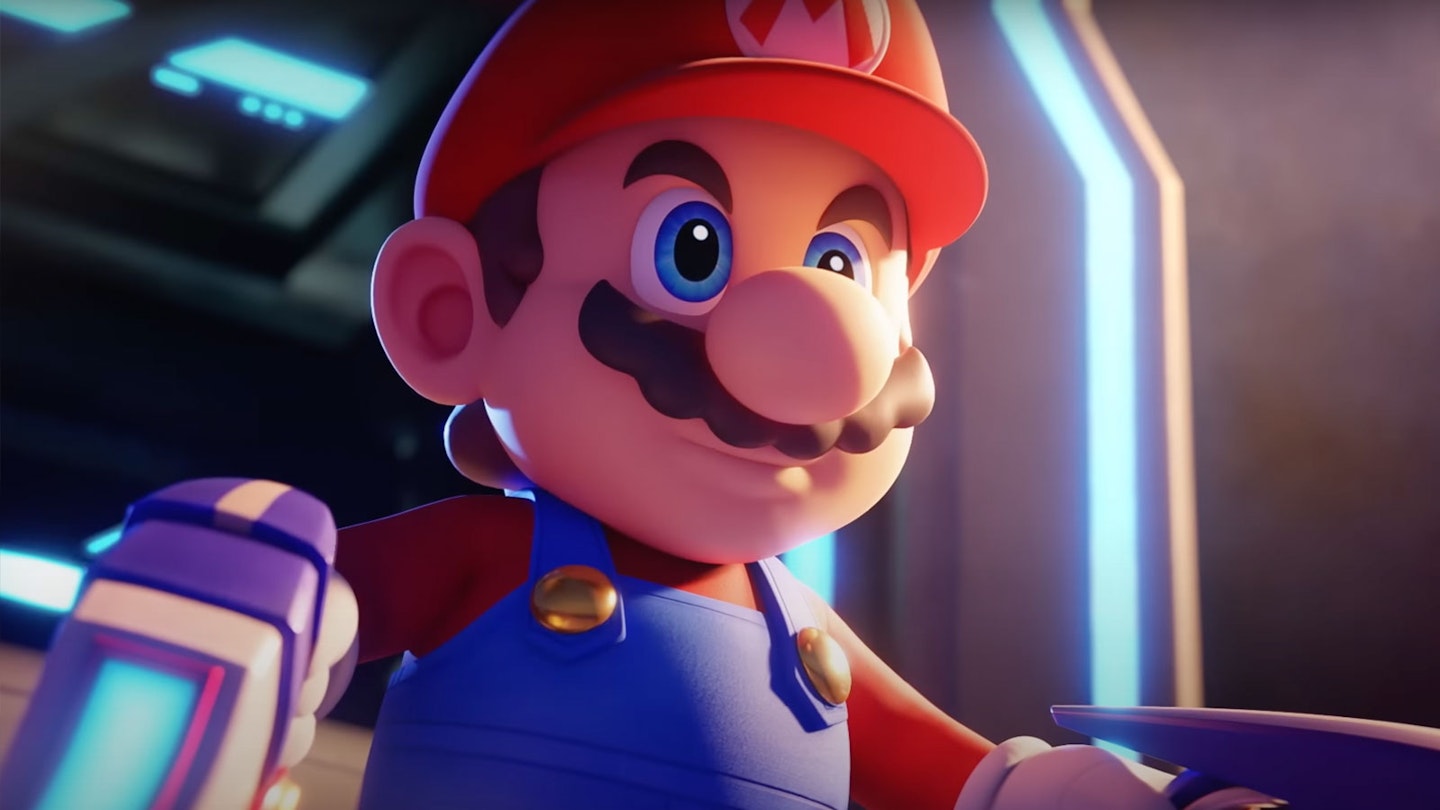Platforms: Nintendo Switch
The original Mario + Rabbids: Kingdom Battle took players by surprise when it arrived in 2017, mainly by taking two franchises that absolutely should not work together – the iconic Super Mario cast and the innately irritating Rabbids, originally spinoff characters from Rayman – and somehow merging them to create one of the best titles available on the then-nascent Switch. Everything about the project seemed a mismatch, from the cast to the mechanics (a turn-based strategy?!), but in brazen defiance of the wills of gods and men alike, Ubisoft's impossible crossover resulted in one of the finest, and unexpectedly toughest, examples of the genre on any platform.
Fast-forward five years, and Mario and his unlikely pals are back for another round of twisted tactical battles, and it's a testament to the unexpected genius of the original that Sparks Of Hope now feels like a sequel that's long overdue. Kicking off in the wake of the first game, players find the galaxy under threat from big bad Cursa, who has corrupted various Rabbid-populated planets with Darkmess (not a typo – a literal dark mess of gloopy evil sludge) and seeks to control the eponymous Sparks – half Rabbid, half Super Mario Galaxy's Lumas, mysteriously connected to Galaxy's Rosalina.

The initial roster of playable characters in Sparks Of Hope is slightly trimmed down from its predecessor, with only Mario, Luigi, Peach, and their Rabbid mirrors appearing. Gone are Yoshi and his Rabbid equivalent, but as the game progresses the party is expanded again by the addition of Bowser, a Rabbid version of Rosalina, and Edge – a brand new original character who, with her spiky hair, giant sword, and plethora of belts, looks like she teleported in from some unknown Final Fantasy crossover.
The returning cast have switched up their arsenal and combat roles, too. While Mario remains an all-rounder, Rabbid Mario is now an up-close fighter who wears a pair of boxing glove style Dukes (as in "put up yer..."), while Luigi trades his Luigi's Mansion era vacuum cleaner gun for a bow and arrow and a fixture as team sniper. Peach and Rabbid Peach retain their roles as defender and healer, respectively, but now deal more damage thanks to their 'Boombrella' and missile launcher weapons. Rabbid Luigi is perhaps the most fun, with a frisbee-type main weapon that ricochets between enemies to damage multiple foes in one turn. The newcomers all offer neat twists to get to grips with too, such as Edge using her sword more as a boomerang, hitting targets multiple times as she throws it across arenas.
What remains a delight is just how smart and complex Mario + Rabbids is.
The titular Sparks prove central not just to the plot of Sparks of Hope but to maximising performance in battle. Each main character can equip Sparks to use in combat, where their elemental powers and abilities gift both active and passive abilities. Using a Spark's ability uses up one of a character's two action points per round, but used smartly, they can change the tide in a single turn. You haven't lived until you've used the Pyrostar Spark to add a fire 'Super Effect' to your attack, set a row of Goombas alight, and cackled with pyrophilic glee as you watch them scatter around the arena, setting other enemies aflame. With dozens of Sparks to recruit, the tactical possibilities are far more expansive than in Kingdom Battle.
Movement is arguably the biggest change to the formula though – no longer grid based, characters can now move freely within a certain radius, which alters how you think about space and positioning in interesting ways. Navigational techniques return, such as Team Jumps, where one character can get a boost from another to travel further around maps, and Dashes, allowing you to barrel into enemies to dish out some damage without using an action point, but you can now run around that gloriously open space to do all of these in any order. Only when you've fired a shot are you locked in place for the turn – and certain abilities and items can allow even this to be negated, which gives a huge amount of freedom to how you tackle each encounter.

Navigation outside of battle is also improved, with worlds that are less linear and pack in more secrets to uncover, plus side missions and puzzles to solve that don't involve combat at all. The result is environments that feel more alive and imaginative, channelling Nintendo's own superlative level design for core Super Mario games.
What remains a delight is just how smart and complex Mario + Rabbids is. The cartoony appearance may lure players into thinking this is a simple strategy game for newcomers to the field, but it's as deep and challenging as any of its more seriously presenting rivals. There's plenty of customisation to dive into, and working out the best balance of characters and Sparks for any particular battle can take considerable thought. Some missions may require real tenacity to complete – there's an early one where you need to throw explosive enemy Bob-ombs into a barrier, which involves waiting for them to appear from portals, avoiding fire from other enemies, and remembering not to use abilities such as Mario's overwatch, which could take out the very Bob-ombs you need to use. Others require specific characters to complete, which is a good way of shaking players out of relying on certain heroes. It's all masterfully constructed.
There are a few areas that feel padded, though — there for the sake of inclusion with no real impact. For instance, being able to Dash enemies on the world map before a battle seems to serve no purpose – you might expect to start the fight having knocked a smidgen of health off enemies, or having lost some if they Dash you first, but no. Similarly, the introduction of full speech for the Rabbids isn't particularly full – expect half-spoken lines that truncate onscreen text. Still, getting to hear the gloriously vapid and self(ie)-obsessed Rabbid Peach yelling "#HealingJourney!" when she restores health justifies the addition.
Yet these minor quibbles don't mar the overall experience. After a half-decade's absence, Sparks Of Hope is a sequel done right. It offers more of what players loved about Kingdom Battle, but packs in enough innovation that the result feels like a meaningful evolution. Hopefully we won’t have to wait five years again for another entry.
